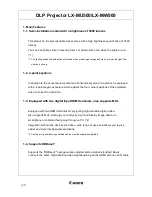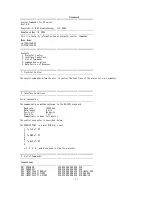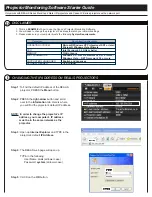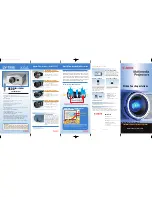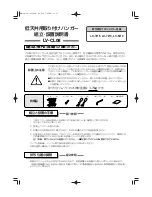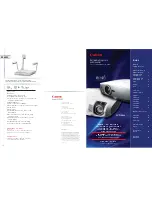
3M
Multimedia Projector MP8610
Theory and Diagrams
3M 1999
4-1
4.
Theory and Diagrams
4-1.
Overview
In order to truly understand what is taking place
when making advanced projector adjustments, the
following concepts must be introduced and
explained. An understanding of these principles
increases your efficiency when making advanced
projector adjustments. The diagrams in this section
assist you in finding the pin locations, connectors
and wiring during troubleshooting.
4-2.
Section Contents
•
Theory of Operation
•
Color Theory
•
LCD Structure Theory
•
Lamp Theory
•
Optical System Layout
•
Connection Diagrams
•
Wiring Diagrams
•
Internal Cabling Pinout Tables
4-3.
Theory of Operation
Use the projector circuitry diagrams as a reference when reading the topics in this section.
4-3-1.
MP8610 Power Supply Circuit
When the main power switch is on and the 110V
AC power is supplied, two DC power circuits are
energized. The AC power passes through a filter
then on to the ballast where the AC voltage changes
to DC voltage and is split. High voltage DC current
is sent to the lamp where it will have six tries to
light. Low voltage DC current is sent to the power
unit circuit then to the Micro processor to power the
rest of the projector.
4-3-2.
MP8610 Video Input and AD Conversion
There are two sets of video inputs. Switching
between them is done using the input button on the
top of the projector or the Video1/2 button on the
remote control.
Signal Board
The video signal passes though the video signal
selector then to the comb filter where it is split into
the chroma signal (C). It is then sent to the
RGB/video selector and the luminance (Y) signal is
sent to the sync selector.
Driver Board
The signal passes through another selector before
the AD converter. The analog signal is changed to a
digital signal and passes though the on screen
display. The gate array is where a smoothing affect
and resizing takes place. The signal is then changed
back to analog and sent to the video
amplifier/inversion amplifier. The luminance signal
(Y) information passes through the gate array and
timing generator. A PLL circuit generates the
sampling pulse for the AD converter and is
dependent upon the detection of vertical and
horizontal sync pulses. The two signals are output
though the video amplifier, where the sample/hold
and video rotation take place before each LCD
receives the appropriate information.




























